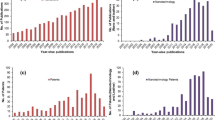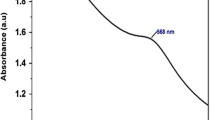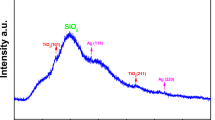Abstract
The leather industry converts the hide, a byproduct of slaughterhouses, into leather, a value-added product. This old industry generates wastes, causing environmental pollution. However, nanomaterials can help to decrease this problem. These tiny particles (1–100 nm) can replace chemicals in various steps of leather processing. This paper aims at giving an overview of the fundamentals of classical leather process and how nanomaterials can be applied in each step to obtain a more sustainable manufacturing. After a comprehensive literature review of journal articles, six steps were identified for potential for application of nanomaterials: unhairing, tanning, retanning, dyeing, fatliquoring, and finishing. With nano-oxides, polymers, and metals, it is feasible to reduce the amount of chemical products and also improve the properties of leather. Thus, it is possible to reach a more eco-friendly and effective process with the use of nanomaterials to turn hide/skins into finished leather.

Similar content being viewed by others
Data availability
All data generated or analyzed during this study are included in this published article.
Abbreviations
- DMDAAC:
-
dimethyl diallyl ammonium chloride
- GLYMO:
-
(3-glycidyloxypropyltrimethoxysilane)
- HMDSO:
-
hexamethyldisiloxane
- PLGA:
-
poly(lactide co-glycolide)
- PMMA:
-
poly(methyl methacrylate)
- PMAA:
-
poly(methacrylic acid)
- PMAAS:
-
methacrylic acid-co-acrylamide-co-acrylonitrile-co-salicylic acid tetrabasic copolymer
- TEOS:
-
tetraethoxysilane
References
Açikel SM, Aslan A, Akgöl S (2019) Innovative application of dye ligand-attached nanoparticles for bating. J Soc Leather Technol Chem 103(2):65–73
Agustini C et al (2018) ‘Biogas production for anaerobic co-digestion of tannery solid wastes under presence and absence of the tanning agent’. Resources, Conservation & Recycling. Elsevier, 130(July 2017):51–59. https://doi.org/10.1016/j.resconrec.2017.11.018
Alliraja C, Rao JR, Thanikaivelan P (2015) ‘Magnetic collagen fibers stabilized using functional iron oxide nanoparticles in non-aqueous medium’, RSC Advances. Royal Society of Chemistry, 5(27):20939–20944. https://doi.org/10.1039/c4ra16181e
Andrioli E, Petry L, Gutterres M (2015) ‘Environmentally friendly hide unhairing: Enzymatic-oxidative unhairing as an alternative to use of lime and sodium sulfide’, Process Safety and Environmental Protection. Institution of Chemical Engineers, 93(June):9–17. https://doi.org/10.1016/j.psep.2014.06.001
Auad P, Spier F, Gutterres M (2019) ‘Vegetable tannin composition and its association with the leather tanning effect’, Chemical Engineering Communications. Taylor & Francis, 207:1–11. 10.1080/00986445.2019.1618843
Ayyappan VG, Prakash D, Jaisankar SN, Sadhukhan N, Alam MS, Samanta D (2020) Nanoconjugates of methacrylic polymers: Synthesis, characterization, and immobilization to leather. J Appl Polym Sci 137(18):1–11. https://doi.org/10.1002/app.48627
Bacardit A et al (2016) Development of Micro/nanocomposites with Antibacterial Effect for Leather and Textile. J Am Leather Chem Assoc 111:267–273
Benvenuti J et al (2019) ‘Application of silanes in leather tanning’, in XXXV IULTCS Congress 2019 - Proceedings, Dresden, pp. 1–9
Buljan J, Kráľ I (2019) ‘The framework for sustainable leather manufacture Second edition’, United Nations, p. 27. Available at: https://leatherpanel.org. Accessed 05 Feb 2021
Carvalho, I., Ferdov S., Mansilla C., Marques S.M., Cerqueira M.A., Pastrana L.M., Henriques M., Gaidau C., Ferreira P., Carvalho S. (2018) ‘Development of antimicrobial leather modified with Ag–TiO2 nanoparticles for footwear industry’, Science and Technology of Materials. STMAT, 30:60–68. 10.1016/j.stmat.2018.09
China, C. R., Maguta M. M., Nyandoro S. S., Hilonga A., Kanth S. V., Njau K. N. (2020) ‘Alternative tanning technologies and their suitability in curbing environmental pollution from the leather industry: A comprehensive review’, Chemosphere. Elsevier Ltd, 254, p. 126804. 10.1016/j.chemosphere.2020.126804
da Rosa de Souza F et al (2020) Extraction of keratin from unhairing of bovine hide. Chem Eng Commun. Taylor & Francis:1–9. https://doi.org/10.1080/00986445.2020.1842740
de Aquim PM, Hansen É, Gutterres M (2019) ‘Water reuse: An alternative to minimize the environmental impact on the leather industry’, Journal of Environmental Management. Elsevier, 230(September 2018):456–463. 10.1016/j.jenvman.2018.09.077
Dettmer, A., Cavalli É., Ayub M. A.Z., Gutterres M. (2013) ‘Environmentally friendly hide unhairing: Enzymatic hide processing for the replacement of sodium sulfide and delimig’, Journal of Cleaner Production. Elsevier Ltd, 47:11–18. 10.1016/j.jclepro.2012.04.024
Dixit, S., Yadav A., Dwivedi P. D., Das M. (2015) ‘Toxic hazards of leather industry and technologies to combat threat : a review’, Journal of Cleaner Production. Elsevier Ltd, 87:39–49. 10.1016/j.jclepro.2014.10.017
Duan L et al (2015) ‘Synthesis of Modified Hydrogenated Castor oil / nano-ZnO Composites and its Application as a Fatliquoring Agent’, Journal of Society of Leather Technologists and Chemists, 99:183–189
El-Monem FA et al (2017) ‘Nano-emulsion based on acrylic acid ester co-polymer derivatives as an efficient pre-tanning agent for buffalo hide’, Arabian Journal of Chemistry. King Saud University, 10: S3861–S3869. 10.1016/j.arabjc.2014.05.024
Florio C et al (2019) ‘Advanced diagnostics and innovative solutions for leather defects: the problem of yellowing’, in XXXV IULTCS Congress 2019 - Proceedings
Fuck W, Gutterres M (2008) ‘Produtos químicos perigosos e de uso restrito no couro’, Tecnicouro 82–89
Fuck W, Brandelli A, Gutterres M (2018) Special review paper: Leather dyeing with biodyes from filamentous fungi. J Am Leather Chem Assoc 113(9):299–310
Gaidau C et al (2015) New smart materials for leather surface functionalisation. XXXIII IULTCS Congress 2:1–8
Gaidau C, Petica A, Ignat M, Popescu LM, Piticescu RM, Tudor IA, Piticescu RR (2017) Preparation of silica doped titania nanoparticles with thermal stability and photocatalytic properties and their application for leather surface functionalization. Arab J Chem. King Saud University 10(7):985–1000. https://doi.org/10.1016/j.arabjc.2016.09.002
Gaidau C et al (2019) ‘Added functions of leather surface by Ag/TiO2 nanoparticles use and some considerations on their cytotoxicity’, in XXXV IULTCS Congress 2019 - Proceedings, pp. 1–7
Gomes CS, Piccin JS, Gutterres M (2015) Optimizing adsorption parameters in tannery-dye-containing effluent treatment with leather shaving waste. Process Saf Environ Prot. Institution of Chemical Engineers 99:98–106. https://doi.org/10.1016/j.psep.2015.10.013
Gutterres M, Mella B (2015) ‘Chromium in Tannery Wastewater’, in Sharma, S. K. (ed.) Heavy Metals in Water: Presence, Removal and Safety. Royal Society of Chemistry, pp. 315–344.
Hansen E, Monteiro de Aquim P, Hansen AW, Cardoso JK, Ziulkoski AL, Gutterres M (2020) Impact of post-tanning chemicals on the pollution load of tannery wastewater. J Environ Manag 269:110787. https://doi.org/10.1016/j.jenvman.2020.110787
Jie C, Xiaoxing L, Jizhang J (2017) Synthesis and Performance of Nano-Encapsulated Phase Change Materials for Leather. J Am Leather Chem Assoc 101:308–311. https://doi.org/10.1149/1.2724759
Kanagaraj J, Panda R (2011) Modeling of Dye Uptake Rate, Related Interactions, and Binding Energy Estimation in Leather Matrix using Protein Based Nanoparticle Polymer. Ind Eng Chem Res 50:12400–12408. https://doi.org/10.1021/ie200644u
Kanagaraj J, Panda RC, Senthilvelan T, Gupta S (2016) Cleaner approach in leather dyeing using graft copolymer as high performance auxiliary: Related kinetics and mechanism. J Clean Prod. Elsevier Ltd 112:4863–4878. https://doi.org/10.1016/j.jclepro.2015.05.109
Kanagaraj J, Panda R, Kumar M (2020) Trends and advancements in sustainable leather processing: Future directions and challenges—A review. J Environ Chem Eng. Elsevier 8:104379. https://doi.org/10.1016/j.jece.2020.104379
Kaygusuz MK (2017) Application of Antimicrobial Nano-Materials on Leather: A Review. SLTC Journal 101(Table I):173–178
Kaygusuz M et al (2016) Antimicrobial nano-Ag-TiO2 coating for lining leather. Rom Biotechnol Lett 21(5):11866–11880
Kaygusuz M et al (2018) Modification of Leather Surface with Atmospheric Pressure Plasma and Nanofinishing. Polym-Plast Technol Eng. Taylor & Francis 57(4):260–268. https://doi.org/10.1080/03602559.2017.1320725
Kopp V, Dos Santos JH, Gutterres M (2019) ‘Clove Essential Oil-Free and Encapsulated for Antimicrobial Leather’, Journal of Society of Leather Technologists and Chemists, pp. 8–13
Kothandam R, Pandurangan M, Jayavel R, Gupta S (2016) A Novel Nano-finish Formulations for Enhancing Performance Properties in Leather Finishing Applications. J Clust Sci. Springer US 27(4):1263–1272. https://doi.org/10.1007/s10876-016-0997-8
Liu G, Haiqi G, Li K, Xiang J, Lan T, Zhang Z (2018) Fabrication of silver nanoparticle sponge leather with durable antibacterial property. J Colloid Interface Sci. Elsevier Inc. 514:338–348. https://doi.org/10.1016/j.jcis.2017.09.049
Liu Y, Song B, Zhang J, Gaidau C, Gu H (2020) Aluminum tanning of hide powder and skin pieces under microwave irradiation. J Leather Sci Eng 2(1). https://doi.org/10.1186/s42825-020-00037-w
Lkhagvajav N, Koizhaiganova M, Yasa I, Çelik E, Sari Ö (2015) Characterization and antimicrobial performance of nano silver coatings on leather materials. Braz J Microbiol 46(1):41–48
Lv S, Zhou Q, Li Y, He Y, Zhao H, Sun S (2016) Tanning performance and environmental effects of nanosized graphene oxide tanning agent. Clean Techn Environ Policy. Springer Berlin Heidelberg 18(6):1997–2006. https://doi.org/10.1007/s10098-016-1128-9
Lyu B, Wang HD, Ma JZ, Gao DG, Jin P (2016) Preparation and application of castor oil/nano-TiO2 composite fatliquoring agent via a Pickering emulsion method. J Clean Prod. Elsevier Ltd 126:711–716. https://doi.org/10.1016/j.jclepro.2016.02.099
Lyu B, Chang R, Gao D, Ma J (2018) Chromium Footprint Reduction: Nanocomposites as Efficient Pretanning Agents for Cowhide Shoe Upper Leather. ACS Sustain Chem Eng 6(4):5413–5423. https://doi.org/10.1021/acssuschemeng.8b00233
Ma J, Zhang X, Bao Y, Liu J (2015) A facile spraying method for fabricating superhydrophobic leather coating. Colloids Surf A Physicochem Eng Asp 472:21–25. https://doi.org/10.1016/j.colsurfa.2015.02.019
Mancopes F, Gutterres M, Dettmer A, Barrionueo P (2008) ‘Colágeno: Estrutura, Propriedades e Processos.’, in A Ciência rumo à Tecnologia do Couro, Porto Alegre, 2008, p. 426−505
Mella B et al (2019) ‘Preparation and characterization of activated carbon produced from tannery solid waste applied for tannery wastewater treatment’, Environmental Science and Pollution Research. Environmental Science and Pollution Research, pp. 6811–6817.
Murugappan G, Zakir MJA, Jayakumar GC, Khambhaty Y, Sreeram KJ, Rao JR (2016) A Novel Approach to Enzymatic Unhairing and Fiber Opening of Skin Using Enzymes Immobilized on Magnetite Nanoparticles. ACS Sustain Chem Eng 4(3):828–834. https://doi.org/10.1021/acssuschemeng.5b00869
Murugappan G, Khambhaty Y, Sreeram KJ (2020) Protease immobilized nanoparticles: a cleaner and sustainable approach to dehairing of skin. Appl Nanosci. Springer International Publishing 10(1):213–221. https://doi.org/10.1007/s13204-019-01113-2
Omoloso O et al (2020) Corporate sustainability disclosure: A leather industry perspective. Emerg Sci J 4(1):44–51. https://doi.org/10.28991/esj-2020-01209
Ortiz-Monsalve S, Valente P, Poll E, Jaramillo-García V, Pegas Henriques JA, Gutterres M (2019) Biodecolourization and biodetoxification of dye-containing wastewaters from leather dyeing by the native fungal strain Trametes villosa SCS-10. Biochem Eng J. Elsevier 141(May 2018):19–28. https://doi.org/10.1016/j.bej.2018.10.002
Pan H, Li GL, Liu RQ, Wang SX, Wang XD (2017) Preparation, characterization and application of dispersible and spherical Nano-SiO 2 @Copolymer nanocomposite in leather tanning. Appl Surf Sci. Elsevier B.V. 426:376–385. https://doi.org/10.1016/j.apsusc.2017.07.106
Pan H, Wang S, Wang X, Gong C, Ding T (2020) Synergistic effects of hydrophilic nano-SiO2/graphene oxide @ copolymer nanocomposites in tanning leather. Adv Powder Technol. Society of Powder Technology Japan 31(9):3910–3920. https://doi.org/10.1016/j.apt.2020.07.029
Petica A, Gaidau C, Ignat M, Sendrea C, Anicai L (2015) Doped TiO2 nanophotocatalysts for leather surface finishing with self-cleaning properties. Journal of Coatings Technology and Research. Springer New York LLC 12(6):1153–1163. https://doi.org/10.1007/s11998-015-9711-2
Piccin JS, Gomes CS, Mella B, Gutterres M (2016) Color removal from real leather dyeing effluent using tannery waste as an adsorbent. J Environ Chem Eng. Elsevier B.V. 4(1):1061–1067. https://doi.org/10.1016/j.jece.2016.01.010
Ramalingam S, Jonnalagadda RR (2017) Tailoring Nanostructured Dyes for Auxiliary Free Sustainable Leather Dyeing Application. ACS Sustain Chem Eng 5(6):5537–5549. https://doi.org/10.1021/acssuschemeng.7b00896
Ramalingam S, Sreeram KJ, Raghava Rao J, Unni Nair B (2016) Organic Nanocolorants: Self-Fixed, Optothermal Resistive, Silica-Supported Dyes for Sustainable Dyeing of Leather. ACS Sustain Chem Eng. American Chemical Society 4(5):2706–2714. https://doi.org/10.1021/acssuschemeng.6b00218
Selvaraju S, Ramalingam S, Rao JR (2017) Preparation and application of biodegradable nanocomposite for cleaner leather processing. J Clean Prod. Elsevier Ltd 158:225–232. https://doi.org/10.1016/j.jclepro.2017.05.014
Shi J, Wang C, Hu L, Xiao Y, Lin W (2019) Novel Wet-White Tanning Approach Based on Laponite Clay Nanoparticles for Reduced Formaldehyde Release and Improved Physical Performances. ACS Sustain Chem Eng 7(1):1195–1201. https://doi.org/10.1021/acssuschemeng.8b04845
Sivakumar V, Mohan R, Muralidharan C (2019) Alternative methods for Salt free / Less salt short term preservation of hides and skins in leather making for sustainable development – A review. Textile Leather Review 2(1):46–52. https://doi.org/10.31881/TLR.2019.19
Velmurugan P, Fathima Nishter N, Baskar G, Dhathathreyan A, Raghava Rao J (2015) Development of smart leathers: Incorporating scent through infusion of encapsulated lemongrass oil. RSC Adv. Royal Society of Chemistry 5(74):59903–59911. https://doi.org/10.1039/c5ra05508c
Velmurugan P, Ganeshan V, Nishter NF, Jonnalagadda RR (2017) Encapsulation of orange and lavender essential oils in chitosan nanospherical particles and its application in leather for aroma enrichment. Surf Interfaces 9:124–132. https://doi.org/10.1016/j.surfin.2017.08.009
Wang X, Guo X, Zhang T, Wang H, Guo P (2017) Properties of polymers as a nanoscale material for fibers in leather. Fibers Polym 18(8):1504–1511. https://doi.org/10.1007/s12221-017-6583-3
Wang X, Tang Y, Wang Y, Ke L, Ye X, Huang X, Shi B (2019) Leather enabled multifunctional thermal camouflage armor. Chem Eng Sci 196(December):64–71. https://doi.org/10.1016/j.ces.2018.12.005
Winter C, Schultz M, Gutterres M (2015) Evaluation of polymer resins and films formed by leather. Lat Am Appl Res 4:213–217
Xu Q, Zhang F, Ma J, Chen T, Zhou J, Simion D, Carmen G (2015) Facile synthesis of casein-based silica hybrid nano-composite for coatings: Effects of silane coupling agent. Prog Org Coat. Elsevier 88:1–7. https://doi.org/10.1016/j.porgcoat.2015.06.011
Yasothai A et al (2019) ‘Nano-bio aldehyde system for leather manufacture’, in XXXV IULTCS Congress 2019 - Proceedings, pp. 1–4
Yilmaz B et al (2015) UV Protection Against Photoageing of Garment Leathers by ZnO Nanoparticles: Application of Nano ZnO in Finishing Process as Photocatalyst. J Soc Leather Technol Chem 100(Vi):321–326
Yorgancioglu A, Bayramoglu E, Renner M (2019) ‘Preparation of Antibacterial Fatliquoring Agents Containing Zinc Oxide Nanoparticles for Leather Industry’, JALCA, 114
Funding
V.V.K. thanks CAPES for the grant. J.H.Z.S. thanks FAPERGS (19/2551-0001869-0) for the financial support.
Author information
Authors and Affiliations
Contributions
Victória Kopp: investigation, writing—original draft. Caroline Agustini: writing—review and editing. Mariliz Gutterres: writing—review & editing, supervision. João dos Santos: conceptualization, writing—review & editing, supervision.
Corresponding author
Ethics declarations
Ethics approval
Not applicable
Consent to participate
Not applicable
Consent for publication
All authors mutually agree that the manuscript can be submitted to Environmental Science and Pollution Research
Conflict of interest
The authors declare no competing interests.
Additional information
Responsible Editor: Philippe Garrigues
Publisher’s note
Springer Nature remains neutral with regard to jurisdictional claims in published maps and institutional affiliations.
Rights and permissions
About this article
Cite this article
Kopp, .V., Agustini, C.B., Gutterres, M. et al. Nanomaterials to help eco-friendly leather processing. Environ Sci Pollut Res 28, 55905–55914 (2021). https://doi.org/10.1007/s11356-021-16216-z
Received:
Accepted:
Published:
Issue Date:
DOI: https://doi.org/10.1007/s11356-021-16216-z




